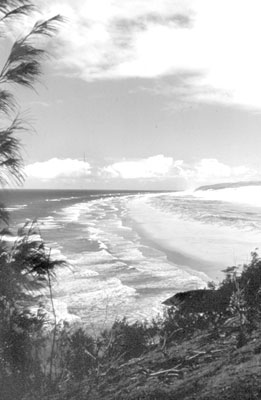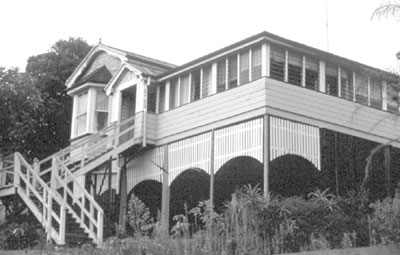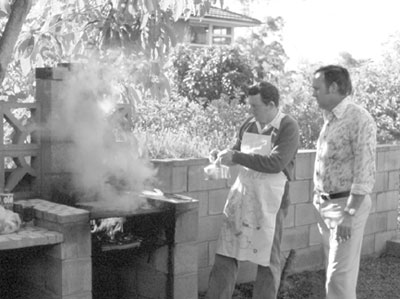Insider tips on Australia travel
Pardon my bias, but I think my native Australia is a great place for North Americans to visit. Similar culture and language (more or less) and a general affection for Americans (called “Yanks”) will make you feel welcome. Yet Australia is still different enough to emphasize that you are in another country.
Americans are sometimes unaware of things about Australia that could help them plan a better visit. From someone who goes back every year (I spend up to three months each year in Australia and New Zealand), let me suggest a few.
AUSTRALIA IS A VAST, MOSTLY EMPTY COUNTRY — This is a land the size of the Lower 48 but with only 20 million people. They mostly live in cities around the southeast coast (Sydney, Brisbane, Canberra, Melbourne), but, even there, long stretches of forests (“bush”) and pastures (“paddocks”) separate towns. In the Outback you can go all day and see no one. Australia is no Western Europe where you can visit three countries in an afternoon. You need to allow time to get around.
THE SEASONS ARE NOT JUST OPPOSITE OF NORTH AMERICA — Of course, summer starts in December and winter in June; you’re in the Southern Hemisphere. But Australia is also closer than the USA to the equator. Almost half of it is in the tropics.
January may be a great time to escape Minnesota, but it is not such a smart time to visit Queensland. Brisbane in January, for instance, is equivalent to Corpus Christi in July. Summer highs around Australia’s southeast coast run in the 90s, but the humidity makes it even more steamy. If you go between December and February, stick to Tasmania, Melbourne or Adelaide; at least the heat is drier.
The tropical north — Cairns and Darwin — has only two seasons: a wet and a dry. Summer is the wet, prone to floods and hurricanes (“cyclones”), plus you can’t swim near shore due to box jellyfish. You’ll feel more comfortable in the far north between June and August.
Personally, I find March through July the best overall time to visit home. It depends on where you’re headed, but that season reminds me of North America’s Indian summer, with sunny days and cool nights — a magical time.
THE LEFT IS NOT THE “WRONG” SIDE OF THE ROAD, BUT IT IS DIFFERENT — If you spend any time in your gateway city, either Sydney, Melbourne or Brisbane, you don’t need a car to see the sights. City centers are compact enough to walk, and all have easy public transport by train, tram (streetcar), bus or ferry.
Once you leave town, a rental car gives you the most flexibility, but traffic drives on the left. It helps that the steering wheel is on the right-hand side of the car — the driver is on the side closest to the centerline, just as in North America. If you’ve driven in the U.K., you should have no problems. If you haven’t, you can still do it, but you need to think about what you’re doing. Sometimes it helps to ride around with someone else for a while until you get a “feel” for driving on the left.
If you’re not up to driving, there are interstate buses (“coaches”) and trains. The latter are especially comfortable.
ALL DOMESTIC FLIGHTS ARE NOT EQUAL — Aussies complain about the “tyranny of distance,” meaning the time it takes to travel from one place within their vast country to another. Flying is the answer and you can book flights via the Internet, but some things are not so obvious.
Qantas has both overseas and domestic flights. It also owns a local airline called JetStar (which is starting in May 2004). Both Qantas and JetStar compete with Virgin Blue, Australia’s number-two domestic airline. All three are reliable airlines, but JetStar and Virgin Blue call themselves low-cost airlines like Southwest or JetBlue in the USA. And they are.
For example, neither offers free in-flight meals or the same baggage limits as on international flights. You can get both at a price, but you need to consider this when comparing airfares. If you are connecting between two cities on either JetStar or Virgin Blue, you may need to claim your checked bags and recheck them at your connecting airport, which means leaving and reentering the secured part of the terminal.
The only exceptions to this rule against checking bags through is if you’re connecting between Virgin Blue and United Airlines or Virgin Blue and Regional Express (“Rex”). At some point, JetStar may offer a similar exception when connecting between it and its parent, Qantas, but at present it allows no interlining of checked bags.
In three ways, all domestic flights are the same: none offer advance seat assignments; carry-on limits are stricter than in the USA, and carry-on limits are enforced.
INDEPENDENT TRIP VERSUS TOUR — If you are willing to drive or use public transport on your own, you can travel independently. At the other end of the scale, you can have someone meet you when you arrive, escort you for the entire trip and deliver you back to the airport when you leave. In between these two extremes is what I call the “mix-and-match option.”
For example, you could explore Sydney a few days on your own, then pick up a tour of the nearby Blue Mountains, then travel on to Melbourne on your own, join another tour of nearby wineries, travel on to Tasmania and have a nature guide show you the local birds and flowers. By picking and choosing, you don’t have to find one packaged tour that covers everything you want. In effect, you create your own.
LEAVE TIME TO MEET THE LOCALS — Whatever you do, find time to mingle with the locals. Book a homestay or farmstay. Have dinner at the local pub or sports club. Both are convivial meeting places for the locals. Strike up conversations. Aussies like to chat with foreigners and they love banter. Put on your driest sense of humor, and you’ll soon be an honorary fair-dinkum Aussie.
WENDY SCHATZ, Owner, Travel Downunder, Bellevue, WA



